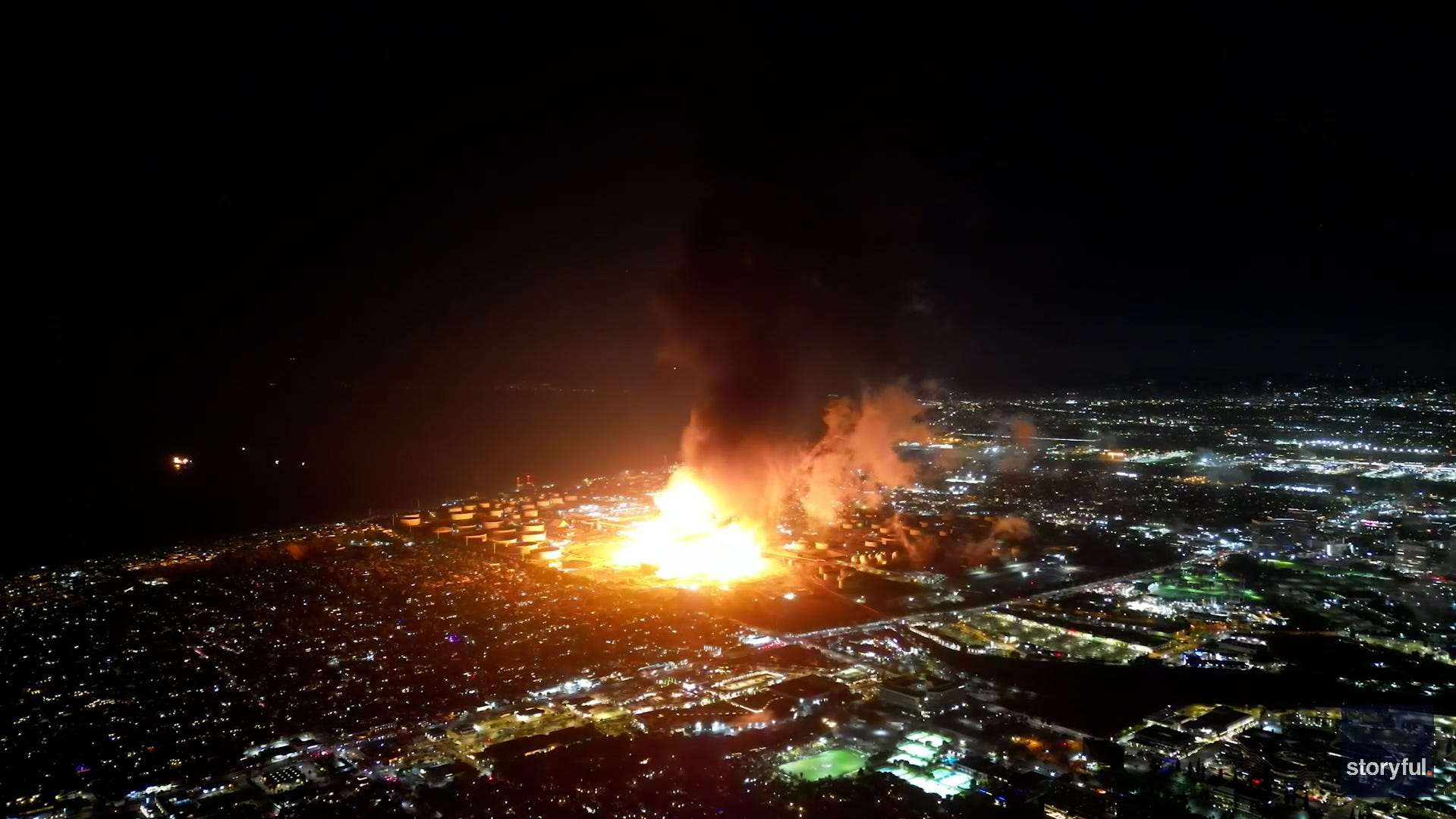
Massive fire erupts at Chevron refinery near Los Angeles
An enormous fire erupted at a Chevron oil refinery in El Segundo, California, drawing attention from onlookers. No injuries were reported.
A massive fire erupted Thursday, Oct 2 at the Chevron El Segundo Refinery, one of California’s largest fuel producers, prompting concerns about a potential spike in gas prices across the state.
The blaze broke out around 9:30 p.m. and was extinguished by Friday morning, according to Chevron. The refinery processes 269,000 barrels of crude oil per day—about 16% of California’s gasoline supply and 40% of Southern California’s jet fuel.
While the full extent of the damage remains unclear, experts say the incident could lead to a 10 to 20 cent per gallon increase in gas prices, depending on how long the facility remains offline.
“There’s really no way to pull that amount of fuel offline, and there’d be zero impact,” Matt McClain, a petroleum analyst at GasBuddy, told SFGATE. “It’ll create a ripple effect, but nothing as big as originally feared.”
Here’s what to know about how the fire may affect gas prices in California.
How much are Californians paying at the gas pump now?
As of Friday afternoon, California’s average gas price stood at $4.64 per gallon, well above the national average of $3.15, according to AAA.
San Francisco: $4.72/gallonLos Angeles County: $4.72/gallonRiverside and San Bernardino Counties: $4.60/gallonTulare County: $4.51/gallonSan Joaquin County: $4.48/gallonVentura County: $4.72/gallonMonterey County: $4.75/gallonShasta County: $4.41/gallonMono County: $5.88/gallon (highest in the state)
Despite the fire, prices have remained relatively stable. McClain noted that existing fuel reserves and alternative supply chains are helping buffer the immediate impact.
“There’s plenty of fuel in the pipeline,” McClain said. “As we go forward a few days, you may find it into a different issue, but right now, we’re OK.”
History of the Chevron El Segundo refinery
The Chevron El Segundo facility is a historic 1,000-acre complex operating since 1911. Its jet fuel production unit was damaged in the fire, and while visible flames lingered into Friday morning, early reports suggest minimal structural damage.
Still, the incident comes at a precarious time. Several California refineries are undergoing scheduled maintenance, and the Phillips 66 complex in Wilmington and Carson is winding down operations this quarter. Valero’s Bay Area refinery is also set to close early next year.
These closures represent 20% of the state’s refining capacity, tightening supply and increasing vulnerability to disruptions.
“If the refinery is offline for weeks, we could see a substantial price spike,” said Severin Borenstein, economist and faculty director at UC Berkeley’s Energy Institute, told the Los Angeles Times.
Cheaper gas on the horizon in California?
Governor Gavin Newsom recently signed a series of climate bills aimed at lowering gas and utility costs, including one allowing gas stations to sell fuel with 15% ethanol—a move that could cut prices by up to $0.20 per gallon.
The governor’s office cited a study estimating $2.7 billion in annual savings for Californians. This comes after Newsom reversed course on oil drilling restrictions, greenlighting up to 2,000 new oil wells annually in Kern County through 2036.
While critics argue these moves contradict California’s carbon neutrality goals, supporters say they must stabilize fuel prices amid refinery closures and supply chain challenges.
What California drivers should do now
Experts urge calm and caution. Panic-buying could create a self-fulfilling shortage, especially if drivers rush to fill up before any price changes.
“You don’t want a huge surge in fuel demand when there’s already a hiccup,” McClain warned.
Instead, drivers should monitor prices, shop around, and avoid topping off tanks unnecessarily. Gas stations may raise prices sporadically, depending on when they receive new shipments, McClain said.